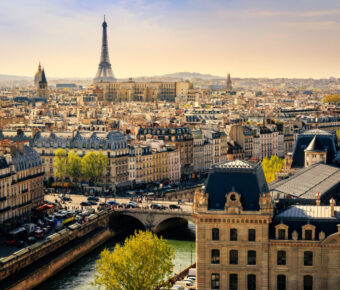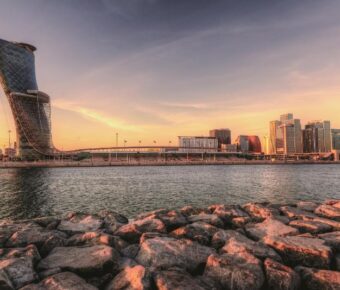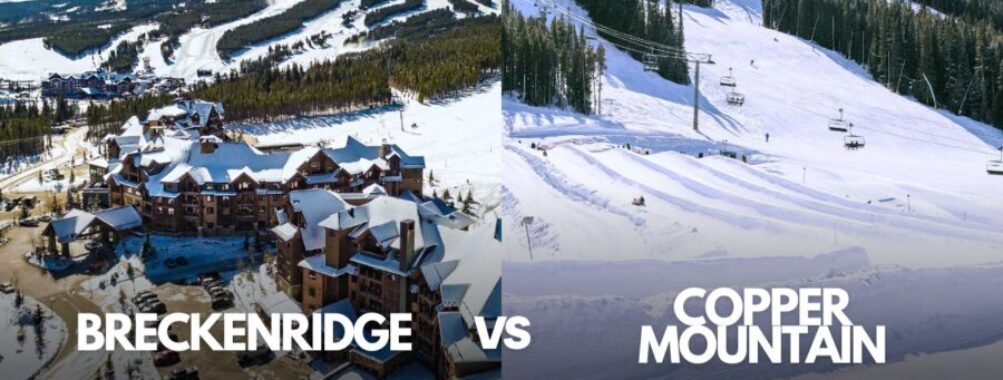
Breckenridge vs Copper Mountain: 7 Key Differences for Your Colorado Ski Adventure
Planning a Colorado ski trip? Deciding between Breckenridge and Copper Mountain can be tough. Both resorts offer excellent slopes, but they have distinct personalities.
Breckenridge combines a charming Victorian mining town with excellent skiing. The resort features larger bowls and impressive high-alpine terrain with legitimate steeps.
After hitting the slopes, you can explore the vibrant town with its various shops and restaurants. The nightlife and après-ski scene wins points for those seeking adventure and entertainment.
Copper Mountain offers a different experience. It’s more of a pure ski resort with better crowd management and a family-friendly layout. While some skiers say that Copper boasts better overall mountain terrain, it lacks the historic town feel of Breck.
Instead, you’ll find condo developments with fewer dining options. Your choice ultimately depends on whether you prefer a lively town atmosphere or a more focused skiing experience.
Table of Contents
- History and Development
- Breckenridge’s Historical Background
- Copper Mountain’s Evolution
- Geography and Location
- Proximity to Denver International Airport
- Surrounding Towns of Dillon, Frisco, and Silverthorne
- Mountain Terrain and Trails
- Comparison of Ski Terrain
- Beginner, Intermediate, and Expert Ski Runs
- Notable Lifts and Gondolas
- Village Life and Amenities
- Lodging Options at Breckenridge and Copper Mountain
- Dining and Nightlife Experiences
- Shopping and Recreational Activities
- Activities Beyond Skiing
- Winter Activities for Non-Skiers
- Family-Friendly Entertainment and Adventure
- Ski School and Learning Programs
- Seasonal Snowfall and Weather Conditions
- Transportation and Accessibility
- Ticketing and Resort Passes
- Local Insights and Tips
- Frequently Asked Questions
- What distinguishes the ski terrain between Breckenridge and Copper Mountain?
- Which resort offers a more cost-effective experience: Breckenridge or Copper Mountain?
- Could you compare the snow quality and conditions at Breckenridge and Copper Mountain?
- How do the atmosphere and village experience differ between Breckenridge and Copper Mountain?
- Regarding family-friendliness, how do Breckenridge and Copper Mountain stack up against each other?
- Can you provide insights on the ease of access and transportation options when deciding between Breckenridge and Copper Mountain?
- Book Your Dream Experience
- More Travel Guides
History and Development
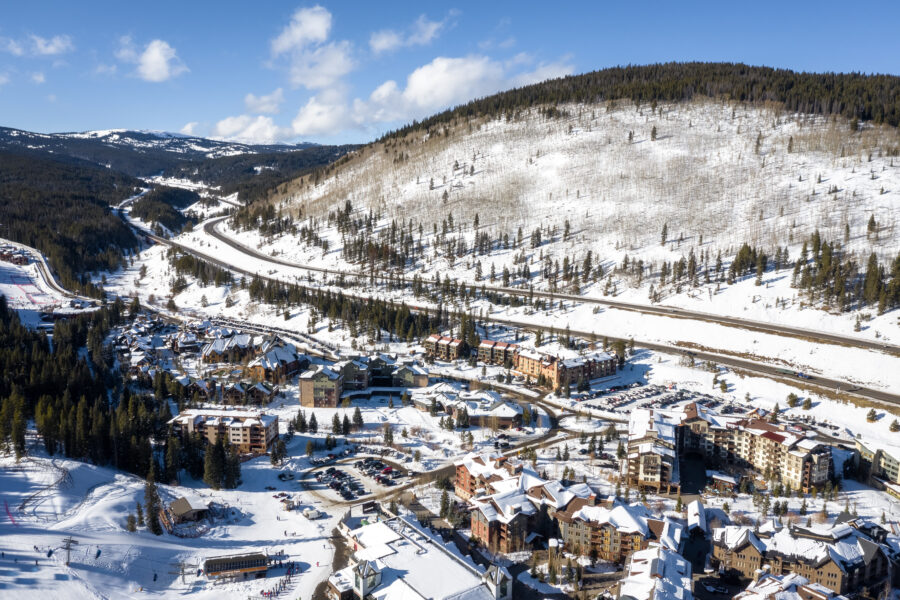
Both Breckenridge and Copper Mountain have fascinating histories that have shaped them into the ski destinations they are today. These Colorado ski areas evolved differently over the decades, with unique founding stories and development paths.
Breckenridge’s Historical Background
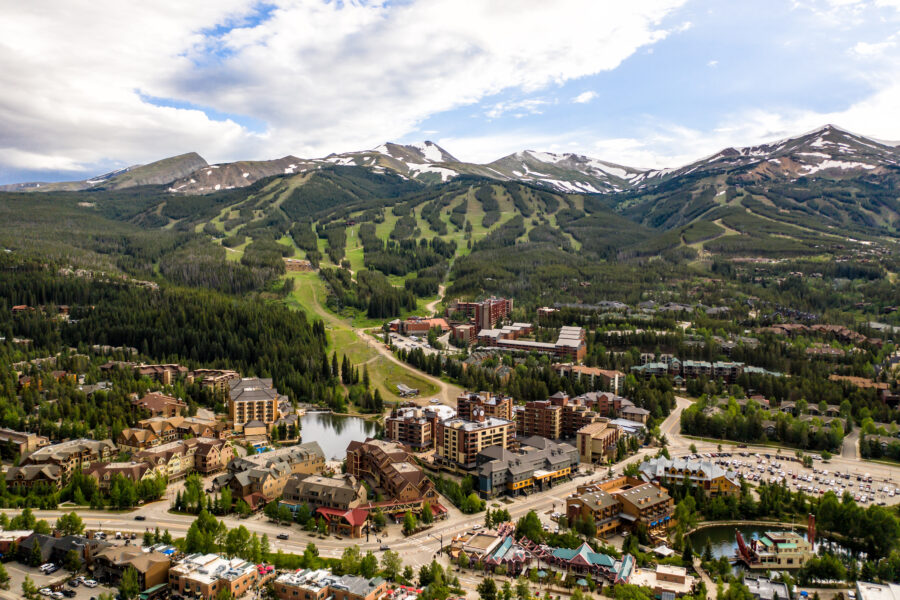
Breckenridge has deeper historical roots, dating back to 1961 when it first opened as Peak 8 Ski Area. The resort was among several that launched during Colorado’s ski industry boom in the early 1960s. Back then, skiers could only access a handful of runs via a single T-bar lift.
Over the decades, Breck (as locals affectionately call it) expanded dramatically. The resort gradually added Peaks 9, 10, 7, and finally Peak 6 in 2013, creating the massive five-peak playground we know today.
What makes Breckenridge special is how it grew alongside its historic mining town, which dates back to the 1850s gold rush. This gave Breck excellent skiing and a charming, authentic mountain town with Victorian architecture and a vibrant Main Street.
Copper Mountain’s Evolution
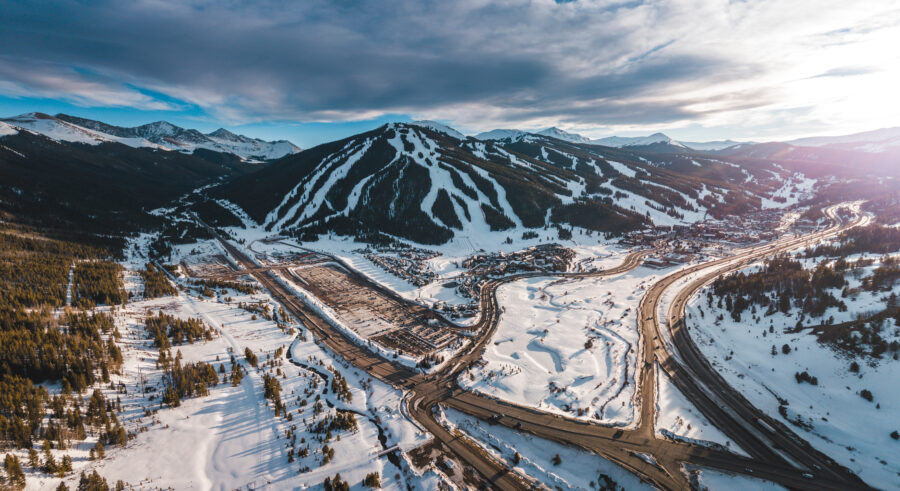
Copper Mountain came onto the scene later than Breckenridge, developing primarily as a purpose-built ski resort. The mountain’s natural layout proved perfect for skiing, with terrain that naturally separates by difficulty level.
Unlike Breckenridge, Copper wasn’t built around an existing historic town. Instead, developers created a resort village at the base, focusing on condo developments and amenities specifically for visitors.
Copper has maintained a reputation for excellent skiing while remaining smaller and less crowded than neighboring resorts. Over the years, the mountain has invested significantly in improved lifts and snowmaking technology.
What’s interesting about Copper is how it’s positioned itself as a training ground for serious athletes, hosting the U.S. Ski Team and providing dedicated racing facilities, while still catering to families and recreational skiers.
Geography and Location
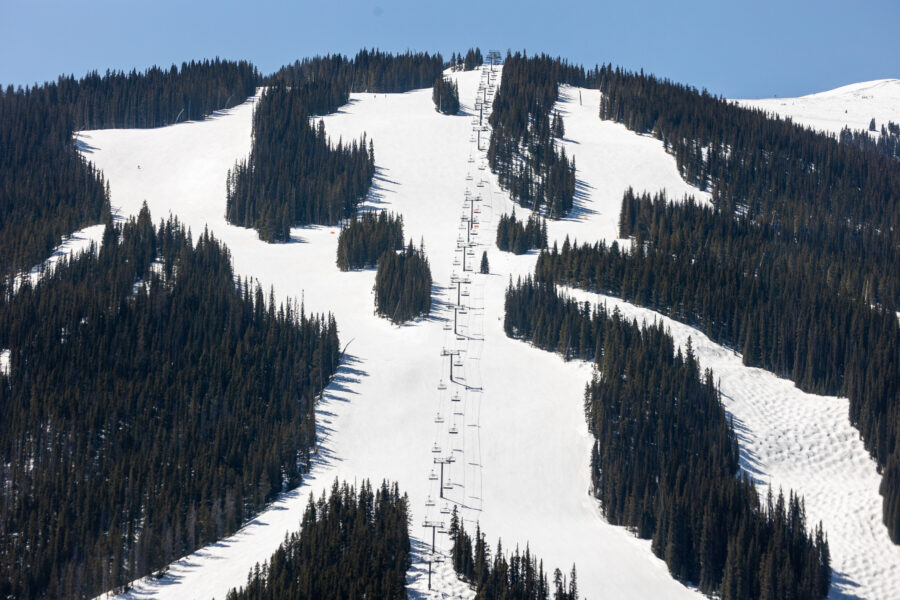
Breckenridge and Copper Mountain sit in stunning locations within Colorado’s Summit County. They’re relatively close to each other but have distinct geographical features that shape the skiing experience and surrounding amenities.
Proximity to Denver International Airport

Both resorts are conveniently located off Interstate 70, making them popular destinations for travelers flying into Denver International Airport (DIA). The drive from DIA to Copper Mountain is about 95 miles and typically takes around 1 hour and 45 minutes in good weather conditions. Breckenridge is slightly farther at approximately 104 miles, usually adding 15-20 minutes to the journey.
Winter travel times can vary dramatically due to mountain weather and weekend traffic. I-70 can become congested during peak travel, especially Friday afternoons and Sunday evenings. Most visitors rent cars at DIA, though shuttle services are available to both destinations.
Surrounding Towns of Dillon, Frisco, and Silverthorne
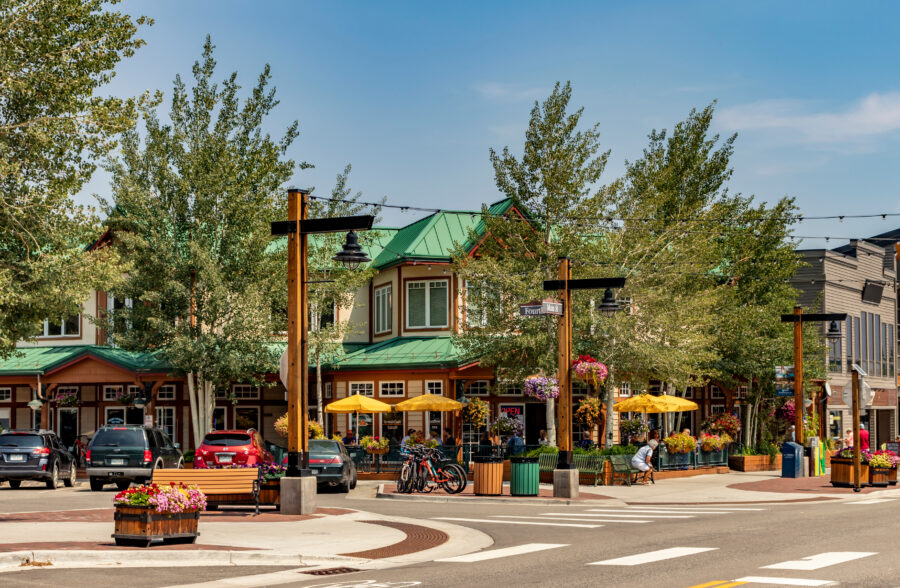
The nearby towns of Dillon, Frisco, and Silverthorne create a vibrant community around these ski resorts. Frisco sits 8 miles from Copper Mountain and 9 miles from Breckenridge, making it a central hub for visiting both resorts.
Dillon and Silverthorne are neighboring towns located near the Dillon Reservoir. These communities offer additional lodging options, often at lower prices than staying at the resorts themselves. Many visitors appreciate the shopping at the Silverthorne Outlets and the dining options throughout these towns.
Unlike Copper Mountain, primarily a purpose-built resort, Breckenridge is an authentic Victorian mining town with a charming downtown area. This historic character gives Breckenridge a different atmosphere compared to the surrounding communities.
Mountain Terrain and Trails
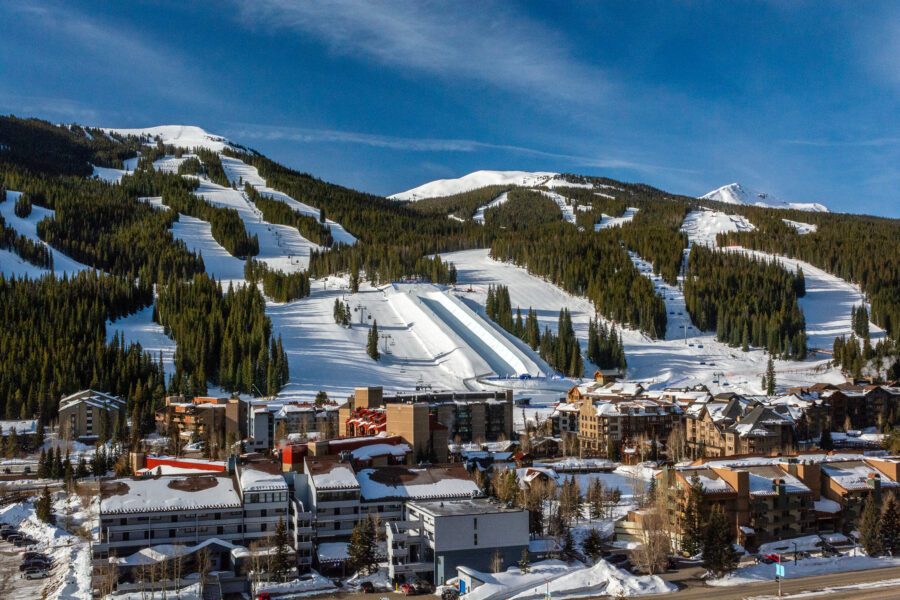
Both Breckenridge and Copper Mountain offer diverse skiing experiences with different terrain layouts. Copper is known for its natural division of difficulty levels across the mountain, while Breckenridge is famous for its high-alpine terrain and extensive variety.
Comparison of Ski Terrain
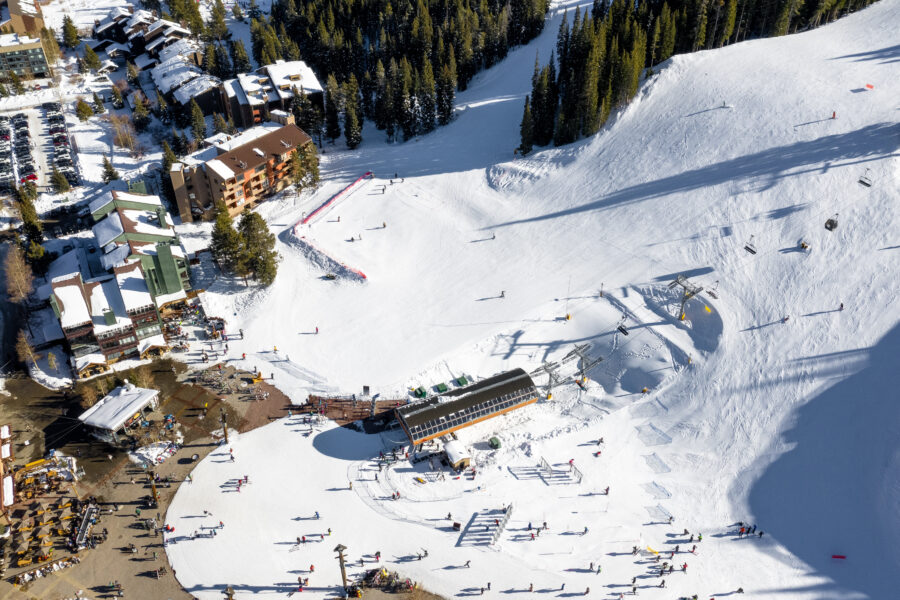
Copper Mountain features a naturally divided terrain layout that makes navigation intuitive. The mountain organizes itself with easier runs on the west, intermediate in the center, and advanced terrain on the east. This natural segregation helps skiers find appropriate runs without accidentally ending up on too rugged terrain.
Breckenridge, in contrast, boasts impressive high-alpine terrain with legitimate steeps. The mountain spans five peaks (6-10), offering more varied terrain spread across a larger area. Peak 10 features challenging tree runs, while Peak 8 provides diverse options for all skill levels.
Copper’s terrain stands out for open bowl skiing with its steep, expansive bowls. Many skiers appreciate its more logical layout, making exploring easier without getting lost.
Beginner, Intermediate, and Expert Ski Runs
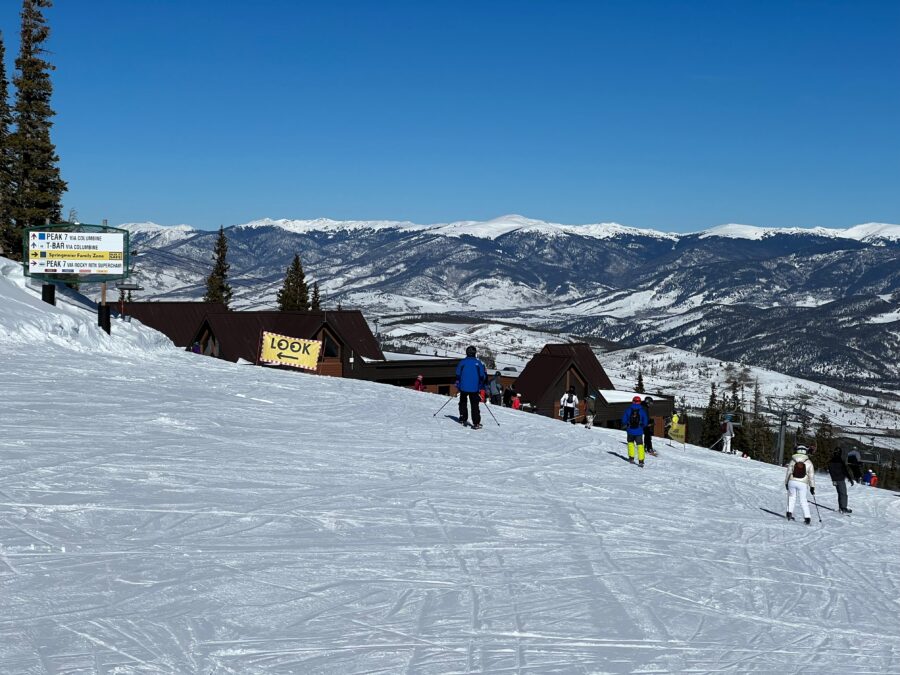
Beginner Terrain:
Copper Mountain offers well-designed green runs primarily on the west side. The gentle slopes provide an ideal learning environment for newcomers.
Breckenridge features beginner terrain mainly on Peak 9, with additional options on Peak 8. The ski school areas are well-designed for learning.
Intermediate Runs:
Copper’s middle section houses excellent blue runs that allow intermediates to progress smoothly. Many of these runs feature consistent pitches without unexpected steep sections.
Breckenridge’s intermediate terrain spreads across multiple peaks, particularly Peaks 7 and 9. The variety gives intermediate skiers plenty of options to explore throughout the day.
Expert Terrain:
Expert skiers will find challenging terrain at both resorts. Copper’s east side and high alpine bowls provide steep, technical skiing. Breckenridge excels with its high-alpine terrain above treeline, offering some truly advanced steeps and bowl skiing.
Notable Lifts and Gondolas
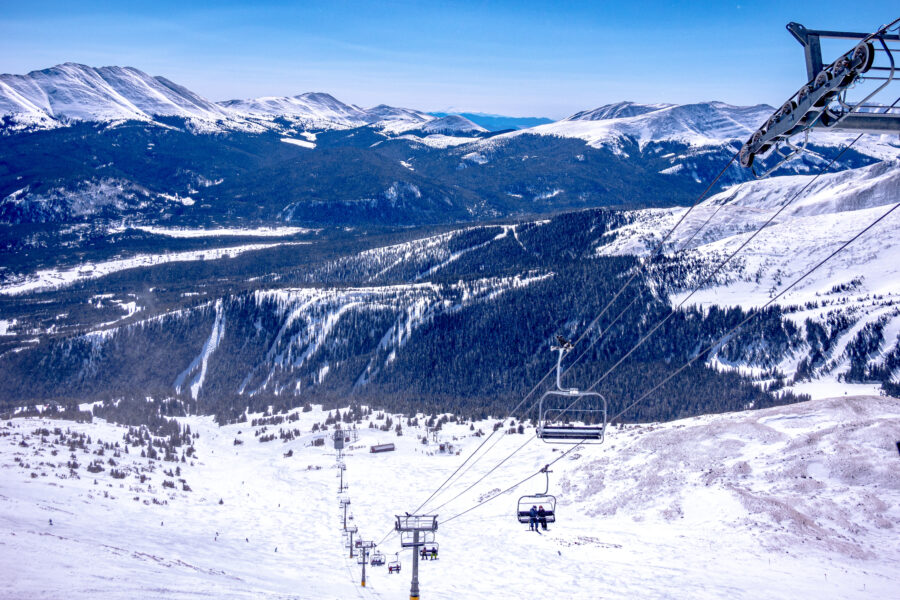
The Super Bee Lift at Copper Mountain provides quick access to advanced terrain on the east side. This high-speed six-person chair minimizes wait times during busy periods.
Copper’s American Eagle Lift is a central access point to intermediate terrain. This combination chair/gondola offers riders a choice of open-air or enclosed travel.
Breckenridge’s Imperial Express is North America’s highest chairlift, reaching 12,840 feet. This lift delivers skiers to some of Breckenridge’s most challenging terrain and breathtaking views.
The BreckConnect Gondola provides convenient transportation from town to the base areas, making access simpler for visitors staying in Breckenridge town rather than at the mountain base.
See Related: Breckenridge vs Aspen: Key Differences to Know Before Booking Your 2025 Colorado Ski Getaway
Village Life and Amenities
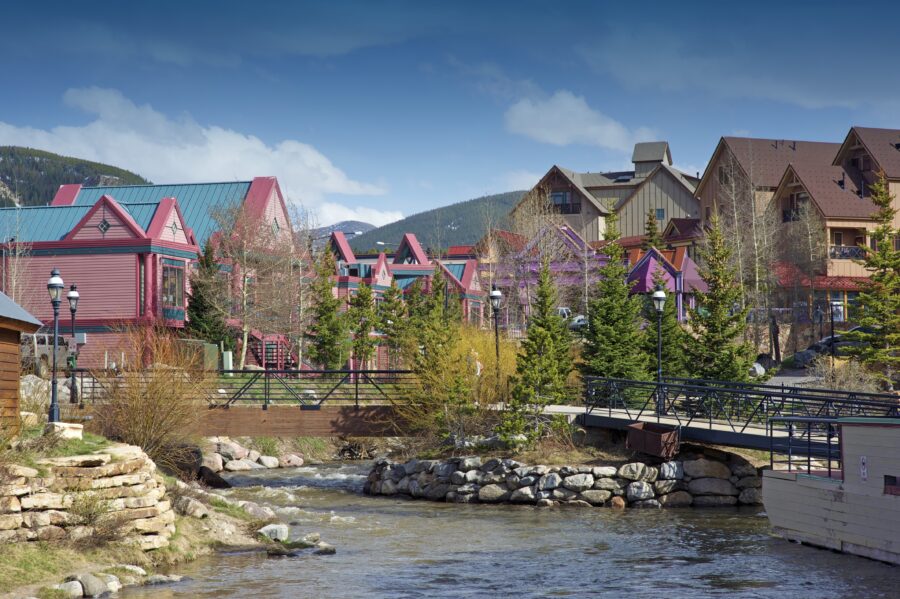
Both resorts offer distinct village experiences with their unique charm. Breckenridge boasts a historic mining town atmosphere with vibrant streets, while Copper Mountain features a purpose-built resort village designed for convenience.
Lodging Options at Breckenridge and Copper Mountain
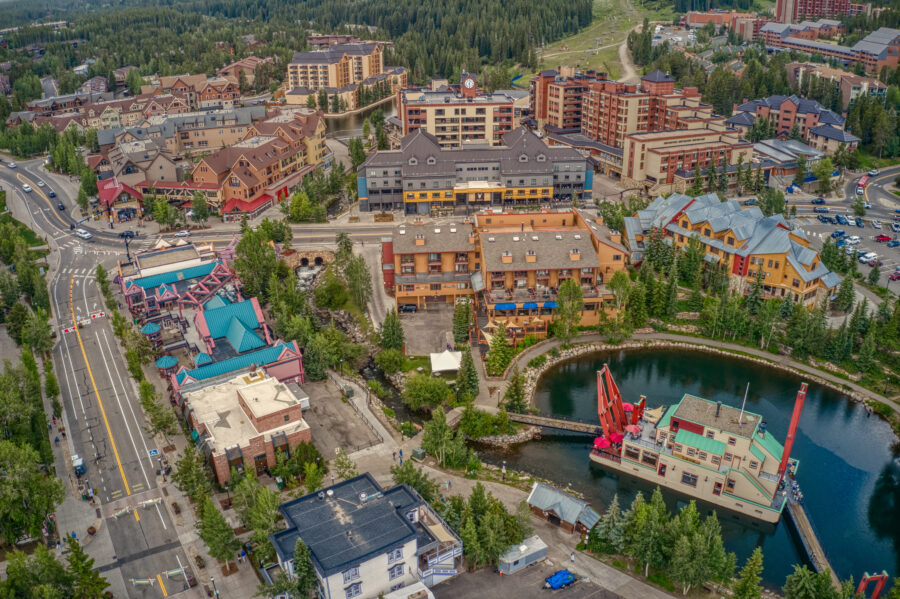
Breckenridge offers diverse accommodations ranging from luxury hotels to cozy mountain cabins. Many lodging options are scattered throughout town and along the mountain’s base. The ski-in/ski-out properties near Peak 8 and Peak 9 provide excellent access to the slopes.
Copper Mountain’s lodging is concentrated in three distinct areas – Center Village, East Village, and West Village. Center Village houses most condos and hotels with easy access to restaurants and shops. East Village caters to advanced skiers with lodging near challenging terrain. West Village offers family-friendly accommodations perfect for beginners.
Prices tend to be slightly higher in Breckenridge, especially during peak season. Copper Mountain generally provides more value-oriented options while still maintaining quality standards.
Dining and Nightlife Experiences
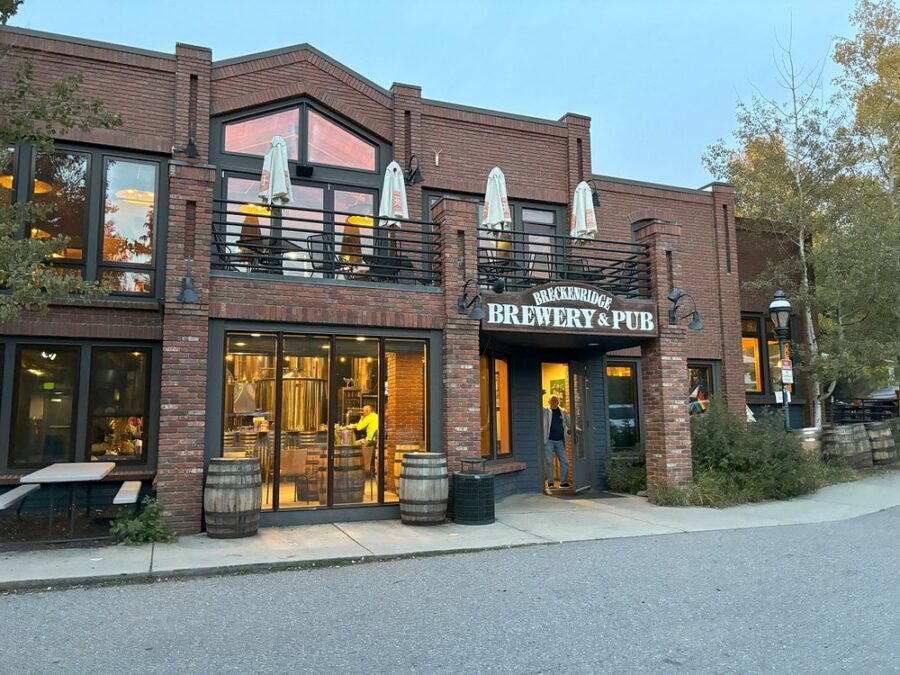
Breckenridge truly shines when it comes to dining and nightlife. The historic Main Street has over 80 restaurants and bars offering everything from casual pub fare to fine dining. Popular spots include Breckenridge Brewery, Blue River Bistro, and Relish.
The town comes alive after dark with numerous bars, pubs, and entertainment venues. Après-ski is a serious affair, with live music and social gatherings at places like Gold Pan Saloon (the oldest bar west of the Mississippi).
Copper Mountain’s dining scene is more contained but still satisfying. Center Village hosts most restaurants, including casual spots like Incline Bar & Grill and JJ’s Rocky Mountain Tavern. Nightlife is more subdued than in Breckenridge, focusing on relaxed après-ski gatherings rather than late-night partying.
Shopping and Recreational Activities
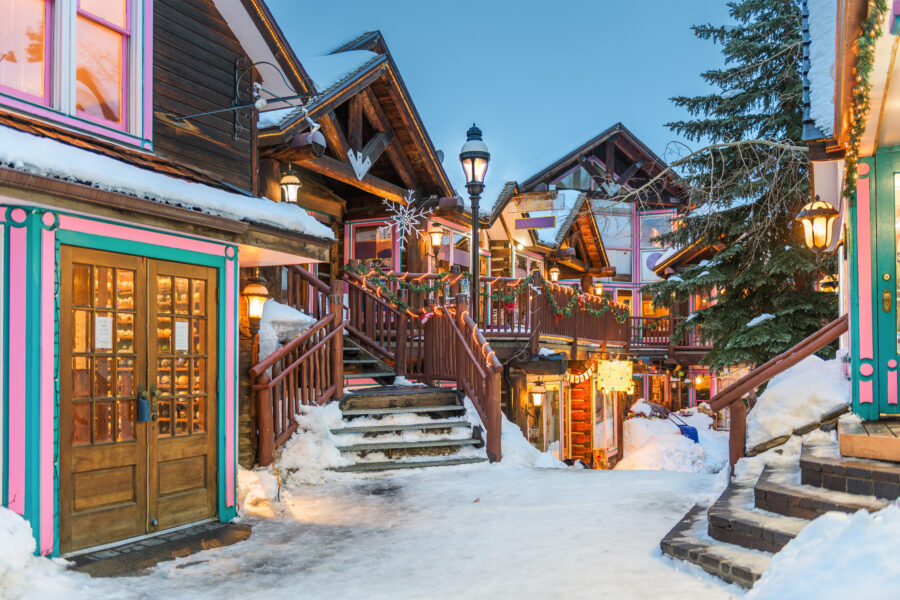
Breckenridge offers extensive shopping opportunities along its charming Main Street. Visitors can browse through boutiques, art galleries, souvenir shops, and outdoor gear stores. The town’s historic character adds to the shopping experience with many businesses housed in preserved 19th-century buildings.
Beyond skiing, Breckenridge provides activities like snowshoeing, dog sledding, and the Alpine Coaster. The recreation center offers indoor swimming and fitness facilities.
Copper Mountain features a more compact shopping area in Center Village with essential retail stores and rental shops. While smaller than Breckenridge, it meets basic vacation needs without feeling crowded.
Off-slope activities at Copper include tubing, ice skating at West Lake, and the Rocky Mountain Coaster. The Athletic Club provides additional recreation options, including swimming and workout facilities, for those seeking indoor activities after skiing.
Activities Beyond Skiing
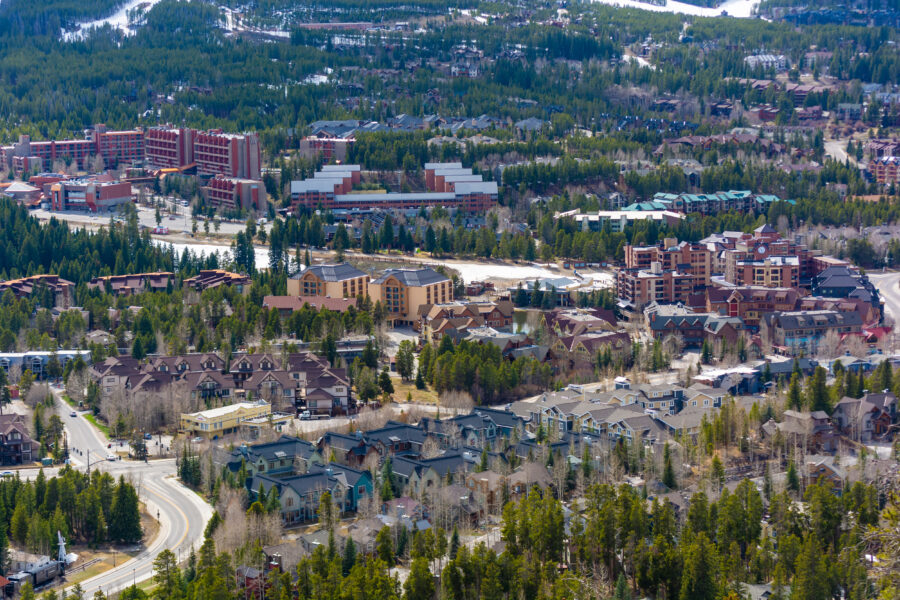
Breckenridge and Copper Mountain offer plenty to do when you’re not hitting the slopes. These Colorado destinations have developed diverse winter experiences that appeal to non-skiers and families looking for adventure.
Winter Activities for Non-Skiers
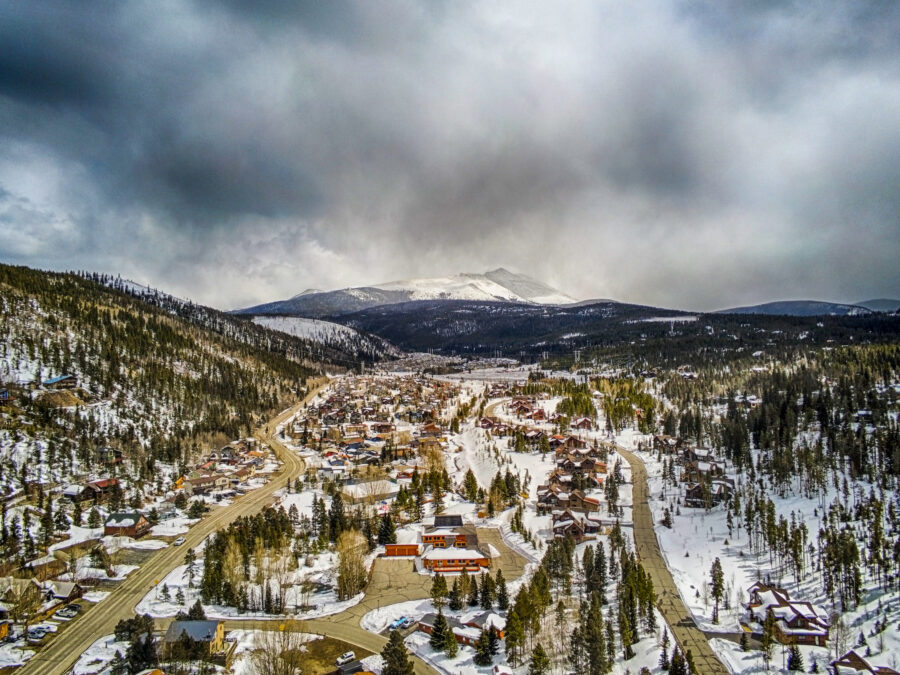
If skiing isn’t your thing, don’t worry! Both resorts have fantastic alternatives. Copper Mountain features an Alpine Coaster that winds through the forest for a thrilling ride with mountain views. Both destinations offer snowmobiling tours through scenic backcountry trails.
Snowshoeing is popular at both locations, with guided tours available for beginners. Breckenridge has more extensive trail networks for this peaceful winter activity. For a unique experience, try a sleigh ride. These horse-drawn adventures often include hot chocolate and stunning mountain scenery.
Hot springs aren’t directly at either resort, but they’re worth the short drive for a relaxing soak after a day of winter activities. Breckenridge offers more shopping options with its historic downtown area when you need indoor time.
Family-Friendly Entertainment and Adventure
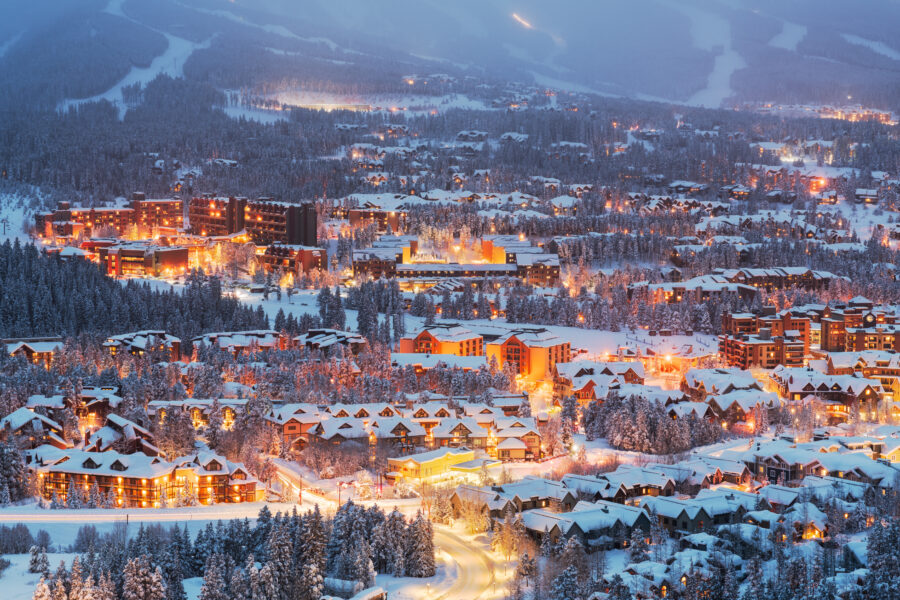
Families love tubing at both resorts! Copper Mountain has dedicated tubing hills, while Frisco Adventure Park near both resorts offers a more affordable tubing option. Kids particularly enjoy the ice maze at Copper Mountain during the winter months.
Both destinations feature ice skating rinks. Breckenridge’s rink sits in the charming downtown area, while Copper’s West Village has a picturesque skating pond. The gondola rides at both resorts provide spectacular views without requiring ski equipment.
Breckenridge edges ahead for overall family entertainment with its more developed town atmosphere. There are more restaurants, shops, and indoor activities when the little ones need a break from the cold.
Ski School and Learning Programs
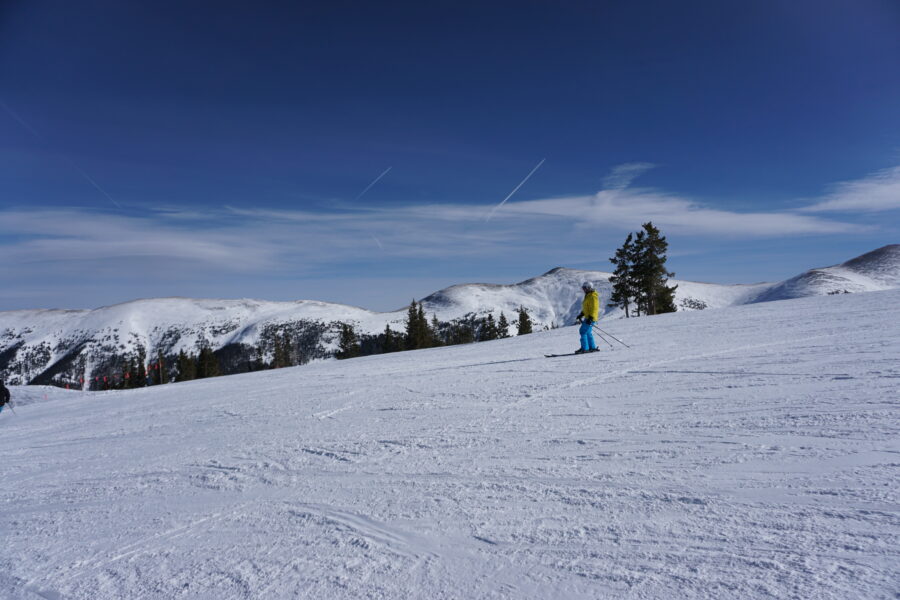
Breckenridge and Copper Mountain offer excellent ski schools for beginners and those looking to improve their skills. These programs cater to different needs and budgets, making them worth comparing before you book.
Copper Mountain’s ski school is often praised for its family-friendly approach. They offer one-day lessons with lift tickets for children ages 3-12 at $191 per child. Many visitors recommend Copper for short, learn-to-ski trips because of its well-designed beginner terrain.
Breckenridge Ski and Snowboard School features the Ultimate 4 Ski Lesson, which limits group sizes to ensure more personalized instruction. This smaller group format helps beginners progress faster, but typically comes at a premium price.
The beginner terrain at both resorts differs slightly. Copper Mountain has naturally segregated terrain that keeps beginners separate from more advanced skiers. This design makes learning less intimidating for first-timers.
Breckenridge offers wider beginner areas but can sometimes feel more crowded. Their ski school has a strong reputation, though some families find it pricier than alternatives.
Some visitors suggest checking out Winter Park as another option for youth lessons. It’s smaller than both Breck and Copper but might offer comparable instruction at different rates.
When choosing between these ski schools, consider:
- Budget constraints (Copper may be more affordable)
- Group size preferences (Breck’s Ultimate four program limits to 4 students)
- Length of stay (Copper is recommended for shorter learning trips)
- Terrain preferences (Copper’s naturally segregated layout benefits beginners)
See Related: Park City vs Breckenridge: Which Premier Ski Destination Offers the Ultimate Mountain Experience?
Seasonal Snowfall and Weather Conditions
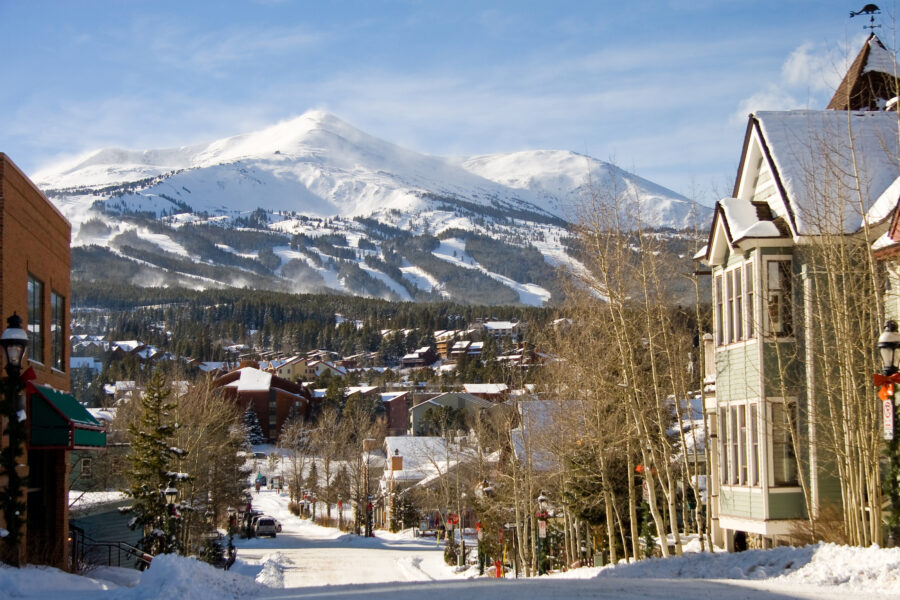
Powder chasers consider snowfall a big factor when comparing Breck and Copper. Breckenridge typically receives around 355 inches of snow annually, almost 30 feet of white stuff throughout winter.
Copper Mountain isn’t far behind, though exact averages vary slightly between sources. Both resorts enjoy quality snow accumulation that keeps slopes well-covered during a typical season.
Both mountains performed well for the 2023-2024 ski season. Breckenridge recorded about 239 inches of total snowfall by the end of the season. Copper Mountain also had a respectable showing, reporting 14 powder days with 6+ inches between December and April.
Weather conditions at both mountains tend to be similar due to their proximity, but there are subtle differences:
Breckenridge
- Higher elevation (base: 9,600 ft, peak: 12,998 ft)
- It can be windier due to exposed peaks
- Slightly colder temperatures
Copper Mountain
- More sheltered terrain
- Base elevation: 9,712 ft
- Summit: 12,313 ft
Snow quality at both resorts is excellent, with the dry Colorado powder that skiers and riders dream about. The ski season typically runs from November through April, with January and February usually offering the most consistent conditions.
If you’re planning a trip, watch snow reports, as snowfall can vary dramatically from week to week in the Colorado Rockies.
Transportation and Accessibility
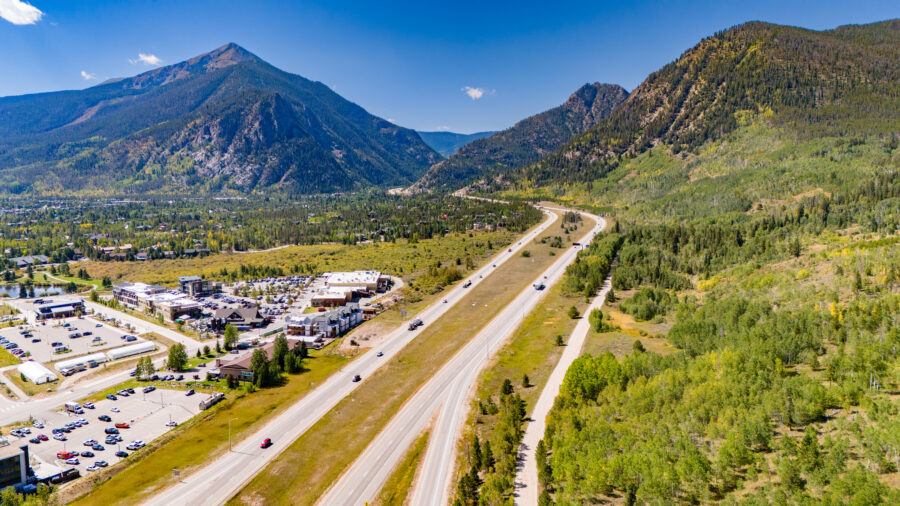
Getting to and around these ski areas is key to planning your trip. Copper Mountain offers easier access to Interstate 70, making it a more convenient option for travelers coming from Denver International Airport. The drive is typically more straightforward with fewer mountain passes to navigate.
Breckenridge is located closer to Route 9, which can mean a slightly longer journey from Denver. However, both resorts are within about 2 hours of Denver International Airport in good weather conditions.
The free shuttle service is a huge perk in both locations. Copper Mountain’s shuttle runs to nearby Frisco in about 10 minutes, giving visitors access to more dining and shopping options without needing a car.
Summit County provides excellent public transportation that connects both resorts to surrounding towns. The Summit Stage bus system is free and runs regular routes between Breckenridge, Copper Mountain, Frisco, and other popular destinations.
For those without a rental car, shuttle services run from Denver International Airport to both ski areas. Though they can be pricey, booking in advance is recommended, especially during peak season.
Breckenridge feels more spread out within the resorts and can be more complicated to navigate. Its larger size means you might spend more time getting from one area to another. Copper’s more compact layout makes it easier to get around, particularly for families with young children.
Ticketing and Resort Passes
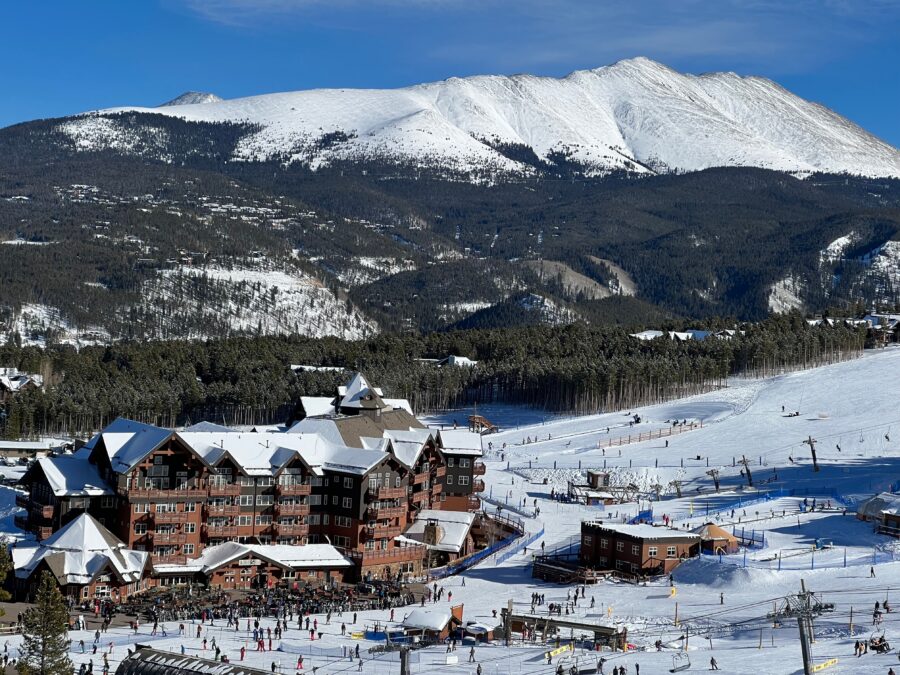
Ticket prices play a big role in planning your ski trip when comparing Breckenridge and Copper Mountain. Copper Mountain typically offers more affordable one-day lift tickets than Breckenridge, with a difference of about $40 per day.
Breckenridge operates under Vail Resorts’ Epic Pass system. Skiers can access multiple mountains on the same pass, including Keystone and sometimes Eldora. It’s a great option to bounce between resorts during your Colorado trip.
Copper Mountain’s ticketing system is outside the Vail Resorts umbrella. They often promote having “the most snow in Colorado” and offer various deals throughout the season.
Epic Pass Benefits (Breckenridge):
- Access to multiple Vail-owned resorts
- Flexibility to ski at Keystone on the same ticket
- Various pass options for different trip lengths
- Mobile app for easy lift access
Copper Mountain Ticket Advantages:
- Generally lower daily rates
- Fewer crowds at ticket windows
- Special discounts and promotions
- Free kids passes with adult purchases
Both resorts offer online purchasing options that let you skip the ticket window lines. Buying in advance online usually means better prices than walk-up rates.
For families, Copper’s occasional “kids ski free” promotions can significantly impact your vacation budget.
Local Insights and Tips
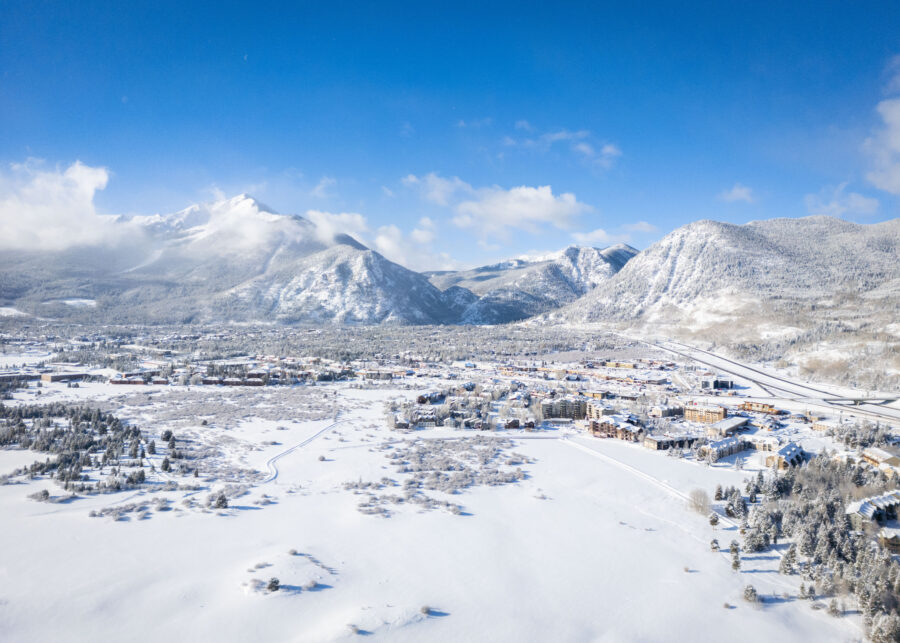
Locals often say Copper Mountain is easier to navigate with its naturally divided terrain – beginners stick to the west, intermediates in the center, and experts on the east. This layout helps everyone find their groove without crossing paths too much.
Breck gets noticeably more crowded, especially on weekends and holidays. If you’re heading there, aim for weekdays or plan to arrive extra early on busy days.
For dining options, Breckenridge wins hands down with its charming downtown offering everything from casual pubs to fine dining. My favorite local tip? Try Downstairs at Eric’s for awesome pizza and a fun atmosphere!
Copper’s dining scene is more limited but still solid. The CB Grille is worth checking out for a nice dinner after skiing.
Both resorts tend to be less crowded than Winter Park during peak times, which is worth considering if you hate lift lines.
Tips from locals:
- At Copper, park in the Alpine lot for easier mountain access
- Take advantage of Breck’s free bus system to avoid parking hassles
- Check out Copper’s free snowcat access to Tucker Mountain for amazing terrain
- First-timers should consider the free mountain tours at both resorts
The best local secret? Visit during March for fantastic spring conditions without the holiday crowds that pack both mountains in December and February.
See Related: Breckenridge vs Keystone: Essential Differences Every Colorado Skier Should Know Before Booking
Frequently Asked Questions
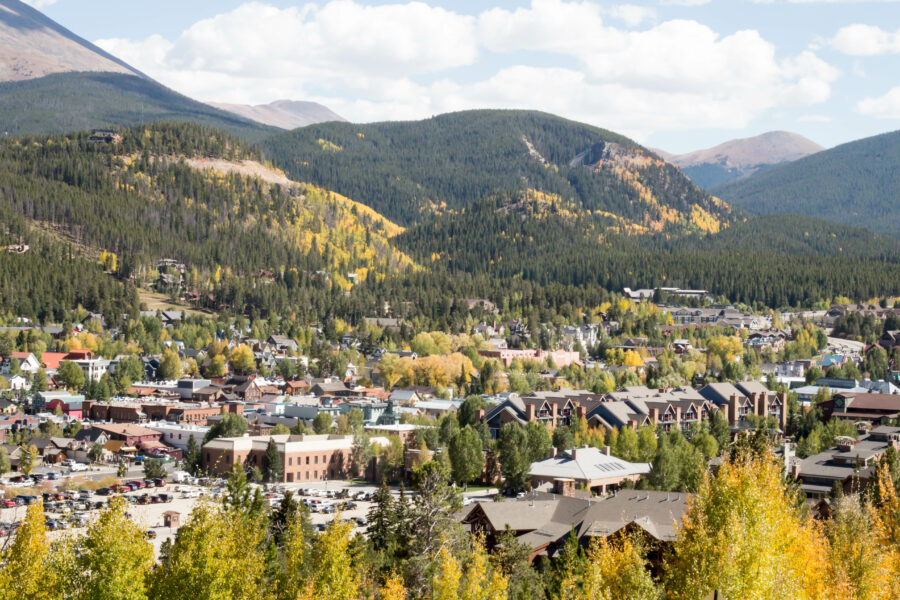
Skiers and vacationers often compare these two popular Colorado resorts when planning their mountain getaway. Each destination offers unique experiences with distinct advantages depending on your preference in a ski vacation.
What distinguishes the ski terrain between Breckenridge and Copper Mountain?
Breckenridge boasts larger bowls and more varied terrain spread across five peaks. The resort features faster lifts and more extreme terrain options for advanced skiers.
Copper Mountain has a naturally divided layout, with terrain that gradually becomes more difficult as you move from east to west. This natural separation makes navigating families and groups of mixed abilities easier.
When winds pick up in the area, Copper tends to fare better. The mountain typically experiences less wind and maintains better visibility than Breckenridge, making it a wise choice on blustery days.
Which resort offers a more cost-effective experience: Breckenridge or Copper Mountain?
Copper Mountain generally offers more budget-friendly options. Lift tickets, lodging, and dining are less expensive than at Breckenridge.
Breckenridge’s popularity and historic town atmosphere come with premium pricing. You’ll typically pay more for accommodations, especially near the slopes and Main Street.
For the budget-conscious skier who still wants quality terrain, Copper often provides better value without sacrificing the skiing experience.
Could you compare the snow quality and conditions at Breckenridge and Copper Mountain?
Both resorts receive abundant snowfall, averaging around 300 inches annually. Breckenridge’s higher elevation (12,998 feet) can mean colder, lighter powder but also harsher weather conditions.
Copper’s slightly lower elevation results in snow that can be heavier but often more consistent. The mountain’s north-facing slopes do an excellent job of preserving snow quality throughout the season.
Wind effects play a significant role in conditions. Copper’s more sheltered position means its snow stays in place better during windy periods, while Breckenridge can experience more wind-scoured areas.
How do the atmosphere and village experience differ between Breckenridge and Copper Mountain?
Breckenridge offers a historic mining town with Victorian architecture and a vibrant, authentic mountain town feel. The main street buzzes with restaurants, shops, and nightlife options, creating a lively après-ski scene.
Copper’s village is purpose-built for skiing, offering convenience but less historical character. While smaller than Breckenridge, Copper’s village provides all necessary amenities in a compact, walkable layout.
For those seeking nightlife and varied dining options, Breckenridge wins with its wider selection of restaurants, bars, and entertainment venues. Copper offers a more relaxed, family-oriented evening atmosphere.
Regarding family-friendliness, how do Breckenridge and Copper Mountain stack up against each other?
Copper Mountain excels at family-friendliness. It’s naturally segregated terrain keeps beginners safely away from advanced skiers, and the compact village layout means less walking for tired little legs.
Breckenridge offers excellent kids’ programs and family activities on and off the mountain. However, its sprawling layout can sometimes be challenging for families to navigate efficiently.
Both resorts provide dedicated learning areas for children, but Copper’s crowd management tends to be better. This means shorter lift lines during peak periods, which can be a significant advantage when skiing with impatient youngsters.
Can you provide insights on the ease of access and transportation options when deciding between Breckenridge and Copper Mountain?
Copper Mountain offers simpler access. It is right off Interstate 70, about 75 miles from Denver International Airport. This convenient location means less time navigating mountain roads, which is especially important during snowstorms.
Breckenridge requires traveling an additional 10-15 minutes beyond Copper. You’ll need to turn off I-70 and take Highway 9. While not significantly farther, this route can become more challenging during heavy snow events.
Both resorts offer shuttle services from Denver airport, though local transportation differs. Breckenridge has a more developed free bus system serving the town and mountain areas. Meanwhile, Copper’s smaller footprint means less need for extensive transportation options.

